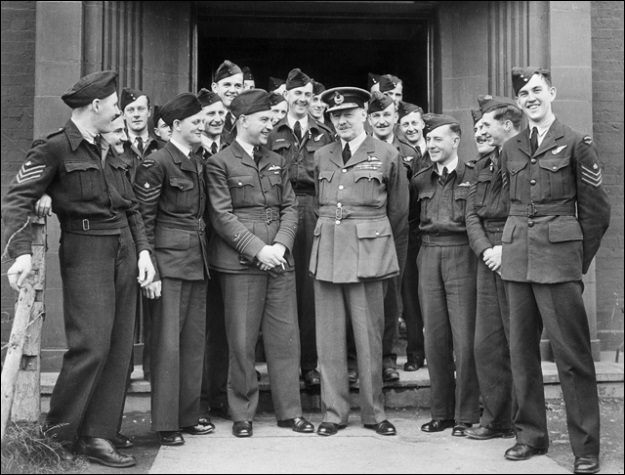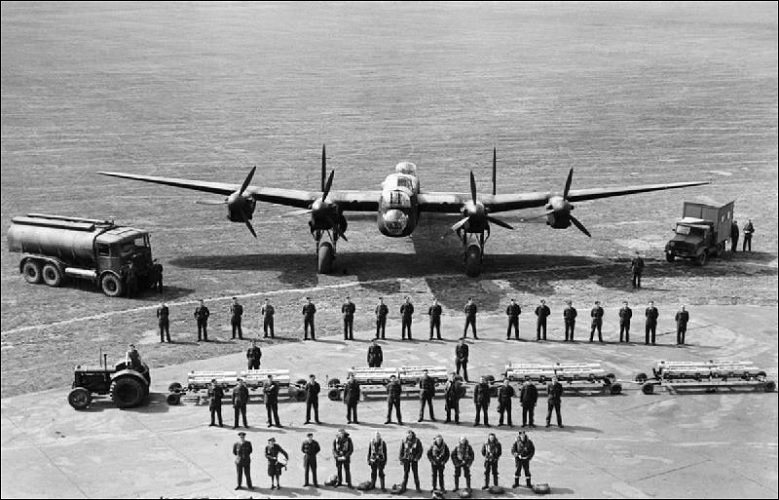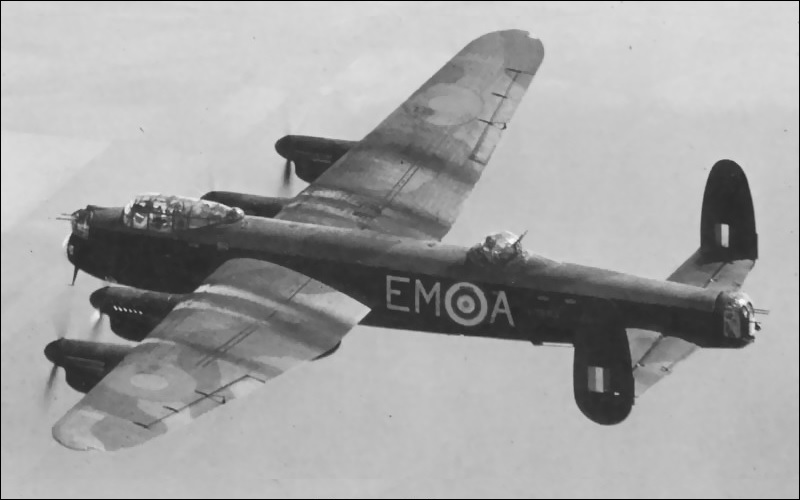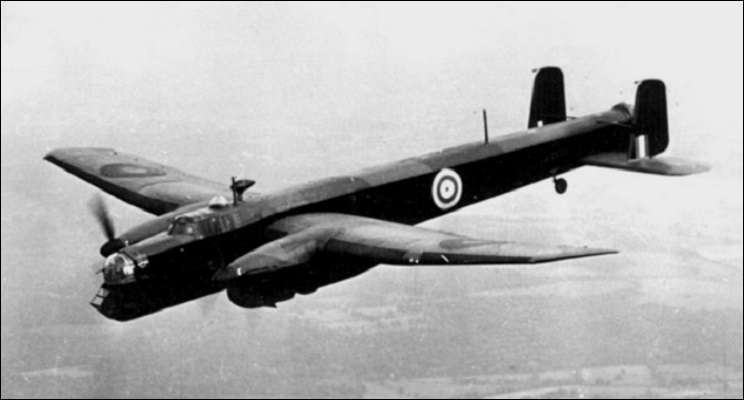● ● ●
Air Marshal Arthur
Harris—Bomber Harris to admirers and detractors alike—assumed command of RAF Bomber Command on 22 February 1942, at
a moment when doubts were growing about the conduct and very
purpose of the strategic air offensive against Germany.
Bomber Command's poor performance in 1941, culminating in
the disastrous night of 7/8 November 1941, had imposed what
amounted to an operational pause. Conservation became the
keynote: a buildup of forces with an eye to a resumption of
the strategic bombing campaign in the spring of 1942. But
skepticism was on the rise and it found its voice only three
days after Harris arrived at Bomber Command HQ in
High Wycombe. Speaking in Parliament on 25 February, Sir
Stafford Cripps, Lord Privy Seal and Leader of the House of
Commons in Churchill’s National Government, raised a
disturbing question: “Whether in the existing circumstances,
the continued devotion of a considerable effort to the
building up of this bomber force is the best use we can make
of our resources.”
Cripps pointed out
that the strategic air offensive had been launched at a time
when Britain stood alone “and it then seemed that it was the
most effective way in which we, acting alone, could take the
initiative against the enemy.” But now the Soviet Union and
the United States were ranged with Britain in a grand
alliance, and “Naturally in such circumstances the original
policy has come under review.” These comments struck the Air
Staff and Bomber Command HQ like a bolt of lightning, and
their effect was only partly dispelled when the Air
Minister, Sir Archibald Sinclair, told the House a few days
later that it was intended to resume bombing Germany at the
earliest possible moment.
But the skeptics made
no impression on the new Air Officer Commanding-in-Chief of
Bomber Command, who never for an instant wavered in his
belief that strategic bombing alone held the key to victory.
Sir Arthur Harris was, one might say, the last and greatest
of the air power prophets. His commitment to the strategic
air offensive was absolute; his attitude toward the other
fighting services bordered on the contemptuous. And in
addition he possessed (in the words of one historian of the
RAF) “the sure touch of a leader.” From the day of his
arrival at Bomber Command HQ, Harris’s energy and grip were
evident. The year 1942 had opened on a note of gloom. It
would end with a thunderclap.

Sir Arthur Harris with
aircrew of No. 460 Squadron, Royal Australian Air Force
(Australian War Museum)
At the time of
Harris’s appointment, a longstanding, fundamental question
about bombing policy remained to be resolved. Since 1940
there had been disagreements within Bomber Command and
the Air Staff over area bombing versus attacks on specific
industrial targets—the latter being official policy.
However, both Air Chief Marshal Sir Charles Portal, the
Chief of the Air Staff, and Harris’s predecessor at Bomber
Command, Air Marshal Sir Richard Peirse, argued in favor of
area bombing—on the pragmatic ground that only a whole
German city was a large enough target to be successfully
located and bombed. Ultimately their opinion carried the day
and while there was no formal change of policy, it was
tacitly accepted that area bombing of urban centers was the
only feasible option.
Harris himself had no
doubt that area bombing was the correct strategy, and he
soon found an ally in the person of Churchill’s chief
scientific adviser, Lord Cherwell. Early in 1942 he wrote a
paper for presentation to the Cabinet that advocated area
bombing of German cities. Cherwell argued that night bombing
was insufficiently accurate to be effective against
precision targets. Instead, the objective should be to
cripple German war production by “de-housing” industrial
workers. In plain language, German industrial workers and
their families were to be targeted. Churchill and the
Cabinet accepted this reasoning and it was embodied in a
formal Area Bombing Directive to Harris. He was enjoined “to
focus attacks on the morale of the enemy civil population
and in particular the industrial workers,” mainly in the
Ruhr, Germany’s largest industrial center.
A directive was one
thing; making it effective was quite something else. If not
moribund, Harris’s new command was in decidedly shaky
condition at the beginning of 1942. There were several
reasons for this: inadequate equipment, high losses, poor
results and, not least, the demands of other theaters of
war. Long-range aircraft were urgently needed for the Battle
of the Atlantic and Bomber Command itself was ordered to
devote much of its effort to minelaying and attacks on enemy
naval targets. In addition, bombers and aircrew were
required for the Middle East. The net effect of all this was
that in February 1942 only 20% of Bomber Command’s total
effort could be devoted to strategic bombing.

A Lancaster bomber with
its flight crew, ground support staff and load of 30lb
incendiaries (Imperial War Museum)
The equipment problem,
at least, was about to be overcome. The new four-engine
heavy bombers, the Handley Page Halifax and the superb Avro
Lancaster, were entering squadron service in early 1942, and
their numbers would grow steadily as the year progressed.
Along with them came new navigation aids. The first of
these, called Gee, was a radio system enabling a navigator to
calculate his bomber’s position by noting the time required
to receive signals from three separate ground stations.
Though Gee had its limitations, it at least promised to get
a bomber in the vicinity of its target. Another new item,
with ominous implications for urban Germany, was an improved
30lb incendiary bomb.
Early raids employing
Gee were directed at Essen in the Ruhr, and proved
disappointing. A first wave of Gee-equipped bombers carrying
flares led these attacks; it was their task to locate and
illuminate the target. They were followed by a second
Gee-equipped wave carrying a maximum load of incendiary
bombs. They were to mark the target by creating a
concentrated area of fire that the third wave, the main
body, could use as an aiming point. But even with Gee not
all of the illuminators and target markers bombed
accurately, and the false target points thus created misled
the main body. Though Gee proved a useful aid to navigation,
it was insufficiently precise for a challenging target like
the Ruhr.
Harris therefore decided
to shift Bomber Command’s attention to a different class of
targets: coastal cities. These had always been relatively
easy to locate, and with the help of Gee there were good
prospects for a successful attack. The first such city
selected was Lübeck on the Baltic coast, once the capital
city of the Hanseatic League. Admittedly it was not a
first-class strategic target, but Harris reasoned that it
was “better to destroy an industrial town of moderate
importance than fail to destroy a large industrial city.”
And Lübeck was attractive for another, sinister, reason: Its
Old Town was a warren of ancient wooden houses. This made it
“a particularly suitable target for testing the effect of a
very heavy attack with incendiary bombs,” as a Bomber
Command evaluation put it.

Lancaster
Mk I of No. 207 Squadron (Imperial War Museum)
Lübeck was struck on the
night of 28-29 March 1942, 234 aircraft being dispatched of
which about 200 located and bombed the target. They dropped
300 tons of bombs including 144 tons of incendiaries, which
destroyed around 50% of the city. In his diary, Goebbels,
the Nazi Minister of Propaganda, lamented that some 80%
percent of the historic Old Town had gone up in flames. But
only 312 people were killed, with around 800 more or
less seriously wounded and 8,000 made homeless—this out of a
population of 125,000. Still, Lübeck was an omen. A month
later Rostock, also on the Baltic coast, was hit on four
successive nights, and the results were devastating. More
than 100,000 people were made homeless; more than two-thirds
of the city were destroyed. The holocaust of urban Germany
had begun.
After Rostock the
operational tempo increased, but Bomber Harris was not yet
satisfied. He wanted an even more impressive demonstration
of Bomber Command’s might. Thus was conceived the MILLENNIUM
operation: 1,000 bombers against one target in one night. On
the face of things, such an attack seemed impossible. Bomber
Command’s average serviceability in the spring of 1942 was
such that it could muster 300-350 aircraft at most for daily
operations. But by extracting a maximum effort from the
front-line squadrons and using the aircraft of Bomber
Command’s Operational Training Units (OTUs) Harris was able
to assemble a force of 1,043 bombers: 553 Wellingtons, 131
Halifaxes, 88 Sterlings, 79 Hampdens, 73 Lancasters, 46
Manchesters and even 28 veteran Whitleys. MILLENNIUM would
commit virtually the whole of the RAF’s bomber force to
action.
Harris presented his idea
to Portal, the Chief of the Air Staff, on 18 May, and the
latter soon obtained Churchill’s enthusiastic approval. The
next full moon would come on May 30/31 and the attack was
scheduled for that night. The weather over Britain was good
but over Germany it was doubtful and of the possible targets
Harris ultimately selected Cologne, the Rhineland’s largest
city, as the most suitable.
MILLENNIUM was a
high-risk operation in more ways than one. Dispatching so
large a force, including as it did a large number of crews
whose training was incomplete, courted disaster: Heavy
losses among the OTUs would cripple Bomber Command’s
training base. The attack was planned to last no more than
90 minutes, which meant a high concentration of aircraft
over the target at any given moment—and a correspondingly
high risk of collision. And if the attack proved
unsuccessful the blow to British prestige would be very
great indeed. The decision to go forward showed Harris at
his best as a leader with the power to decide and command.

The Armstrong Whitworth
Whitley was the RAF's first monoplane bomber, entering
service in 1937. By the spring of 1942 it had been relegated
to training and other second-line duties but 28 Whitleys
assigned to Bomber Command OTUs participated in the
MILLENNIUM attack. (Royal Air Force photo)
The operation commenced
on a note of high tension. The weather over the North Sea
was bad, but conditions improved as the force made landfall
and the weather over Cologne was good. The fires raised by
the illuminators and target markers provided a fine aiming
point for the main body. Some 900 aircraft reached and
bombed the city, dropping 1,000 tons of incendiaries and 500
tons of high explosives. Not all bombers at this time carried
cameras, so an evaluation of the results had to await
subsequent air reconnaissance. This showed that the damage
was “heavy and widespread.” More than 600 acres of Cologne,
including 300 in the heart of the city, appeared to have
been completely destroyed. Once again, however, casualties
were light: 474 dead and 8,000 wounded, many of the latter
not seriously. On the other hand, more than 45,000 people
were made homeless, 36 factories were knocked out and 70
others had their production cut by half. All this was
temporary, of course: Throughout the war, the German home
front showed a remarkable ability to recover from such heavy
blows. Within a couple of weeks, life had returned almost to
normal in Cologne—a fact not appreciated at the time by
anyone in Britain, Harris included.
But by comparison with
Bomber Command’s early operations, MILLENNIUM was rated a great success. And the cost seemed not too heavy. All
told, 41 aircraft went missing: about 3.9% of the force
dispatched. Remarkably, only two were lost in a midair
collision over the target. Two more aircraft came down in
the sea on the return flight, two collided during landing
and five crashed on landing and had to be written off. A
total of 116 aircraft were damaged, twelve so seriously that
they had to be written off, and 33 seriously enough to
require prolonged repairs. Aircrew losses totaled 291 and
more were wounded in damaged aircraft and crashes.
On the very next night
another maximum effort dispatched 957 bombers to Essen and
this time the results were disappointing. So was an attack
on Bremen by 1,003 aircraft later in June. By then it was
becoming clear to Harris that the results of such large
raids did not justify the great effort required to mount
them, and he found himself in the awkward position of
explaining this to Churchill, whose appetite for such big
shows had been well and truly whetted.
Thus in the second half
of 1942 Bomber Command’s operational tempo was somewhat
reduced. Large raids of 500 to 600 bombers were still
launched on occasion, but much time was devoted to analyzing
the lessons of MILLENNIUM and its successors, integrating
new aircraft and weapons into the force, and refining
tactics. By the turn of the year Bomber Command would be a
much more formidable weapon, operating in partnership with
the US Eighth Air Force, whose advanced party arrived in
Britain in February 1942, and which commenced operations in
August. But only in retrospect did it become clear that with
the advent of Bomber Harris and the launch of MILLENNIUM,
the moment of balance was at hand.
● ● ●